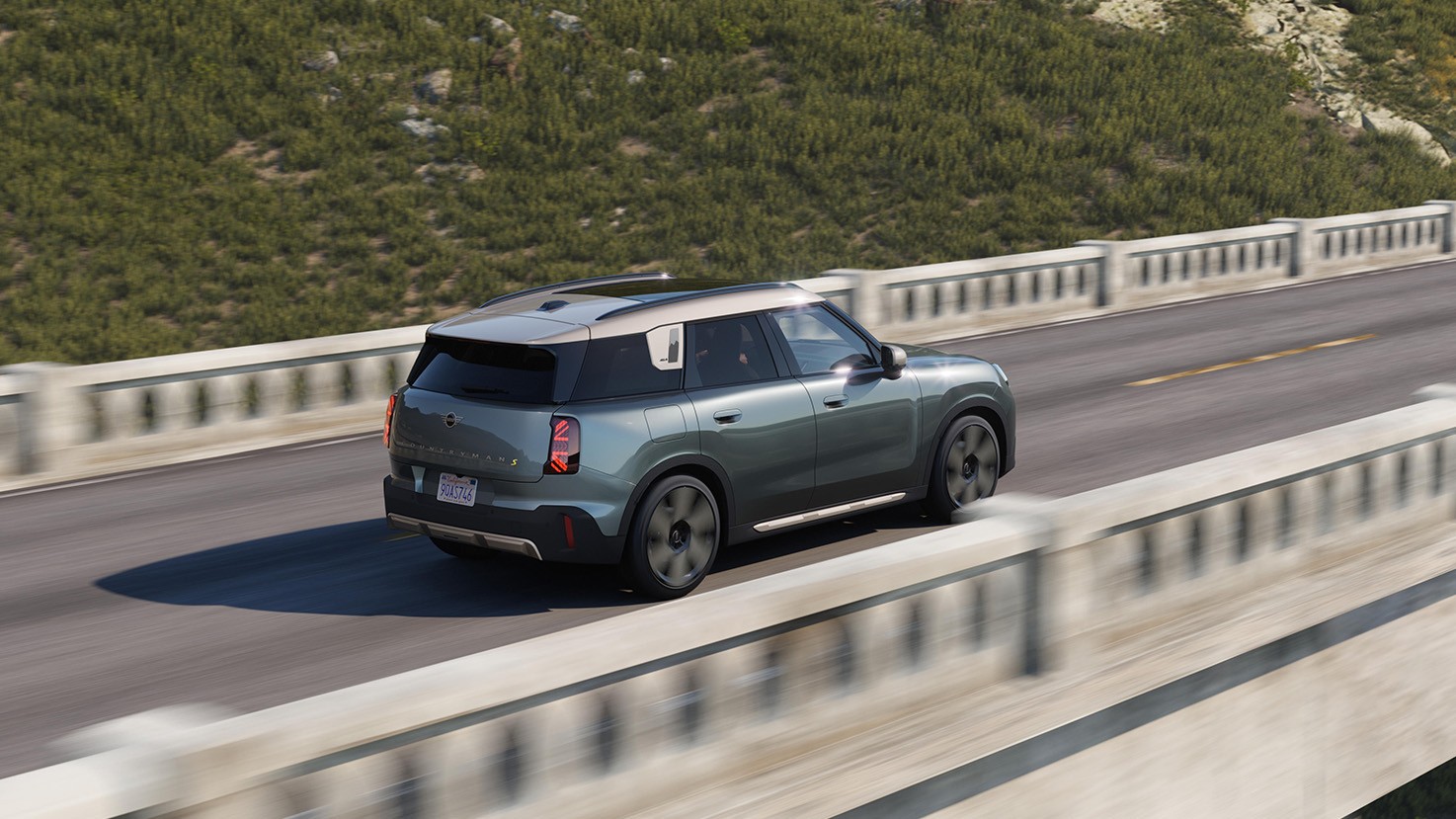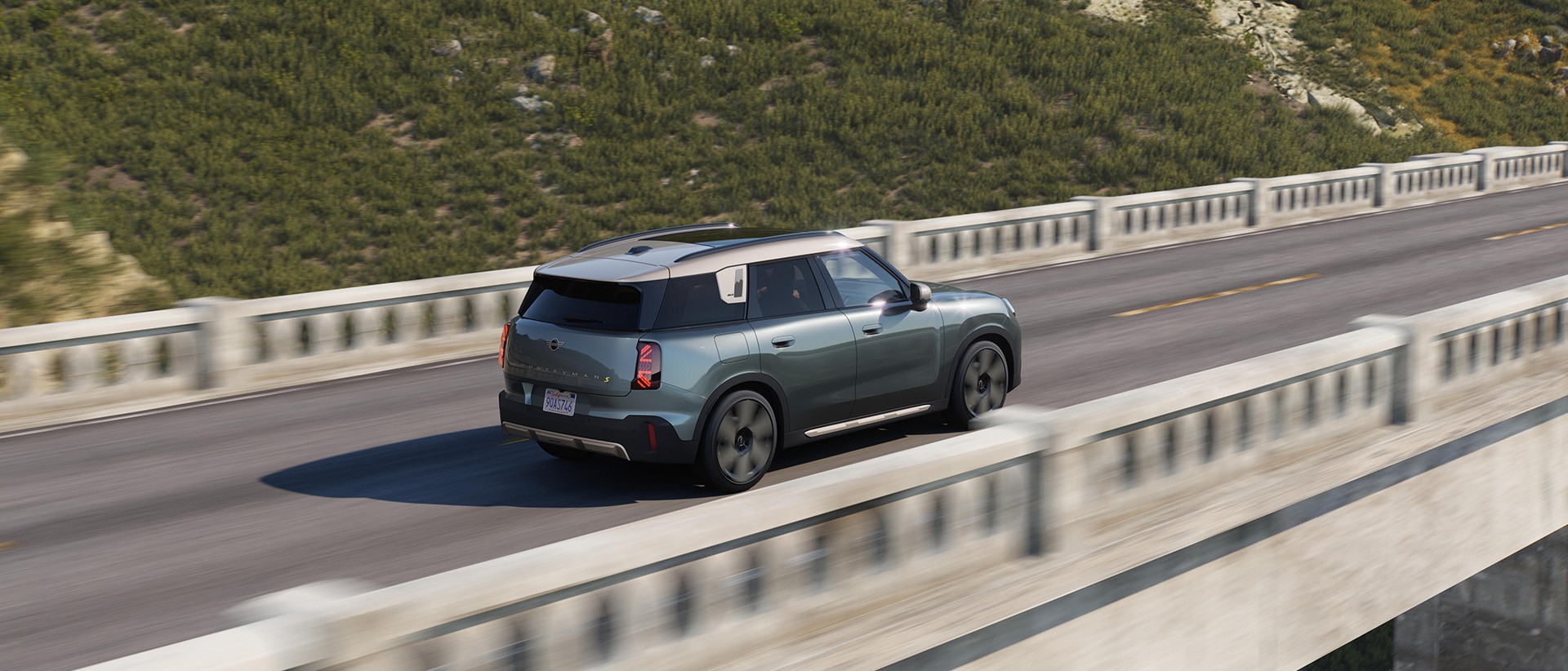Our tool for managing your permission to our use of cookies is temporarily offline. Therefore some functionality is missing.
GO FAR. FEEL FREE.
Your all-electric MINI is built to go the distance - whether it's your daily commute or your next big adventure. Clever onboard tech helps you get the most out of every charge, while smart route planning and charging solutions keep you moving with ease.
Discover how to maximize your range, drive more efficiently, and enjoy the road ahead - with that signature all-electric MINI go-kart feeling, every step of the way.
BUILT TO BOOST YOUR RANGE.
Your MINI brings smart tech to every trip - before you even lift a finger. One-pedal driving makes cruising smooth and intuitive: lift off the accelerator, and your MINI gently slows down while recovering energy through regenerative braking.
RANGE-HACKING MADE EASY.
Your MINI has just the right features to go the extra mile. Flip into Efficient Mode to enjoy a smoother ride with maximized energy recovery. And when every kilometer counts, MAX RANGE gets serious: top speed is limited to 90km/h and comfort features like climate control or seat heating are dialed down. That way every bit of energy flows intro moving forward.
Want to check your current range with just one look? The range circle in the MINI Navigation System gives you a one clance info of how far you can go on your current range. And if your destination lies beyond the range, no stress - your MINI automatically adds the best charging stops to your route or suggests alternatives along the way.
DRIVE SMART. GO EVEN FURTHER.
Smooth acceleration, steady cruising and avoiding full-throttle sprints not only save battery, they also let you enjoy more of what MINI does best: turning every ride into a little adventure.
Your smart efficiency trainer gives you live feedback while driving and rewards your efforts with bonus range. Blue is the new green - whenever your performance dial lights up blue, you're driving extra efficiently.
So take it easy, cruise clever and make every kilometer count.
Simply ask MINI: "Hey MINI, activate the Experience Mode Efficient please." "Hey MINI, how far can I go?"
USE THE MINI ENERGY RECOVERY.
THINGS WE'RE OFTEN ASKED.
You'll achieve the maximum range with your cars by driving in an anticipatory manner and not wasting energy unnecessarily. This applies in particular to motorway driving. You'll need to charge earlier if you drive faster than this. The slower you drive, the further you'll go. The speed on motorways is therefore the major factor affecting your range.
When you take your foot off the accelerator, or only apply moderate pressure to the brake, your cars uses brake energy regeneration (recuperation). Driving in an anticipatory manner and avoiding heavy braking increases your range. Besides the speed at which you drive on motorways, the outside temperature has the biggest impact on the range. The performance of the battery drops with colder temperatures. We recommend pre-conditioning the cars interior to get the most out of your cars from the outset. As cooling or heating uses electric energy, we recommend cooling or heating your cars while it's charging to maintain its maximum range. Simply enter your preferred departure time including climate control on the MINI App or in the cars menu. That way, when you set off, you'll automatically enjoy your ideal interior temperature and the state of charge you entered.
You can also use the Efficient Mode to reduce energy consumption. Alongside other measures, this almost unnoticeably lowers the energy consumption of the air conditioning, seat heating, and other functions. However, don't trouble yourself unduly about the range as the charge-optimised route in the MINI Navigation system indicates where and when you need to top up your car's charge.
The cold can reduce the range of an electric car battery. The usable capacity of the battery can be limited by low temperatures, and the heating system needs more energy.
How can I keep the battery range high in cold weather despite all this? The all-electric MINIs offer the option of pre-heating the car before a journey, preferably when the car is being charged, to warm up the interior and the battery. This reduces the impact of cold on the range. It also helps if the car is parked in a garage in cold temperatures. Specific activation of window and seat heating or pre-heating before the start of a journey also drains a battery less than full air conditioning. Driving in an economical mode, such as Efficient Mode, will also achieve a greater range. Energy consumption can be reduced by limiting comfort functions, such as air conditioning.
Temperature is a key external factor that affects a battery's performance and capacity. This is no doubt a factor you may have experienced with your mobile phone: its capacity is also limited in very cold temperatures. It's the same with your car. The influence of temperature is minimised by optimised operating strategies.
And did you know that the battery capacity also indicates your possible available range? Apart from the temperature, the range is largely affected by your personal driving style, and also by energy consumption factors, such as the air conditioning, trailer load, luggage, etc. By far the most important factor in terms of driving style is your chosen motorway speed.
If you need to charge on the go, your all-electric MINI will be preconditioned when you enter a DC charging station as your destination. This means that the high-voltage battery will be adjusted to the optimum operating temperature when you reach your destination, which will increase its charging capability and shorten the charging time.


